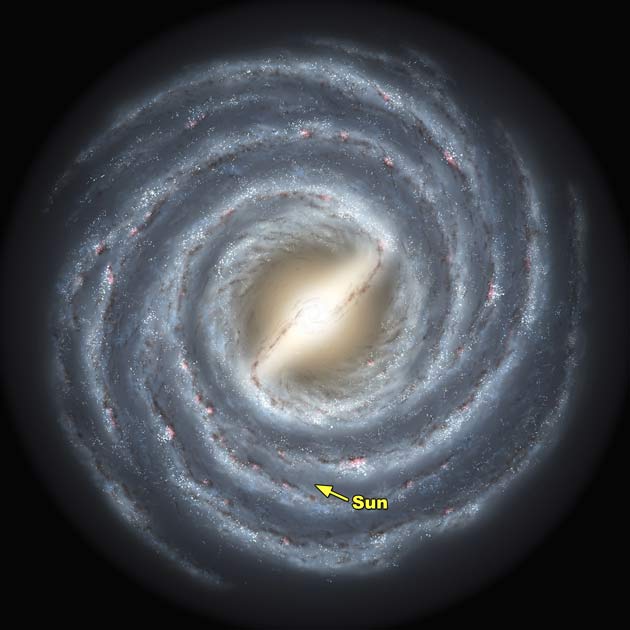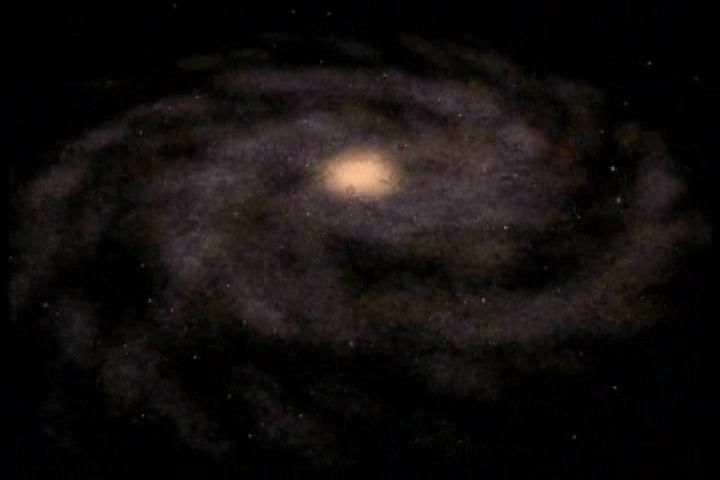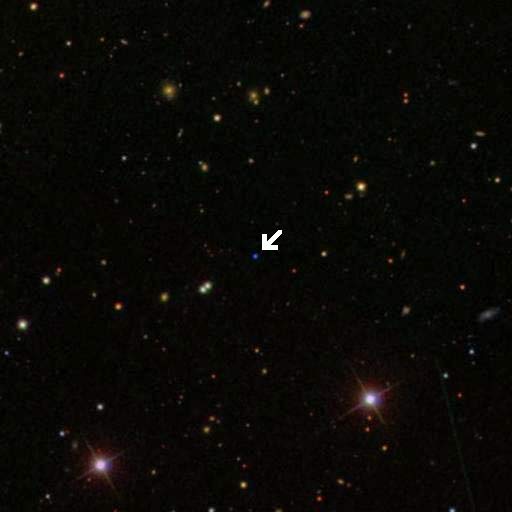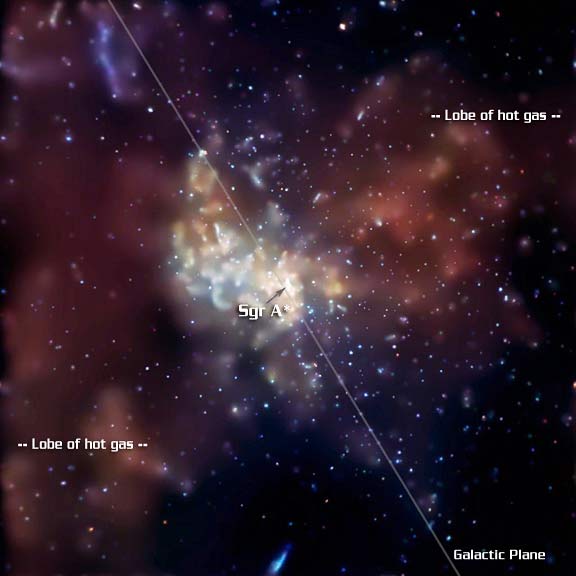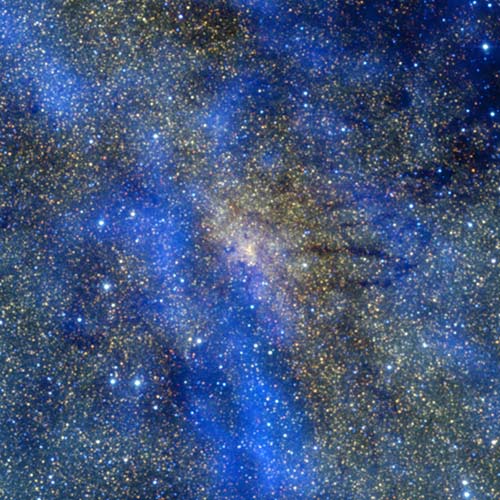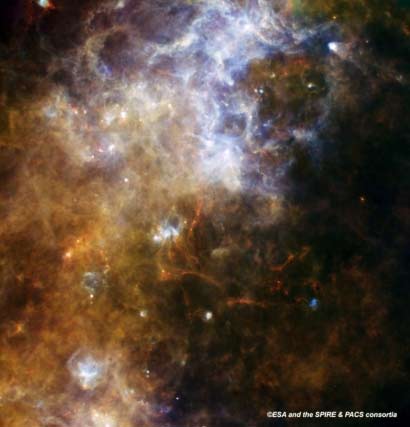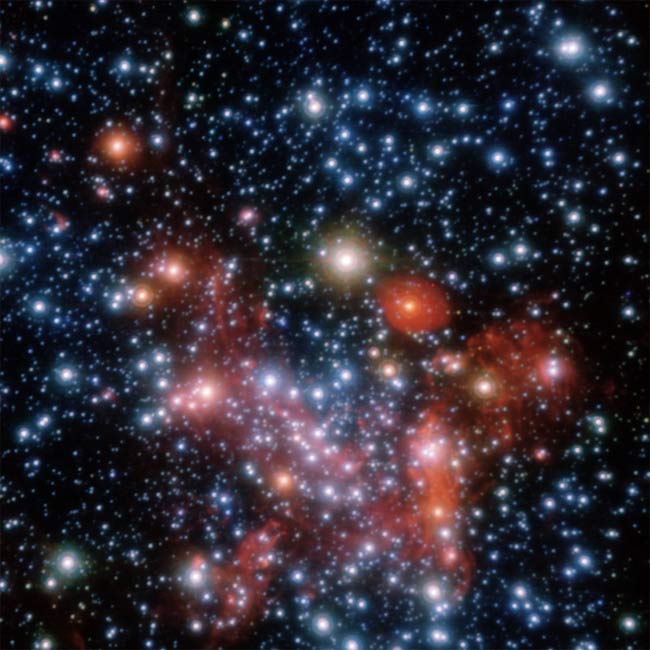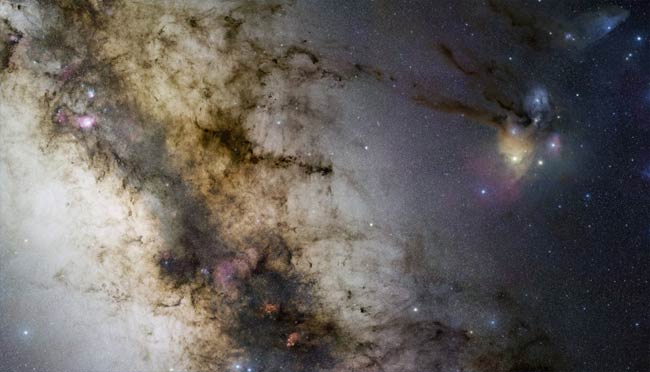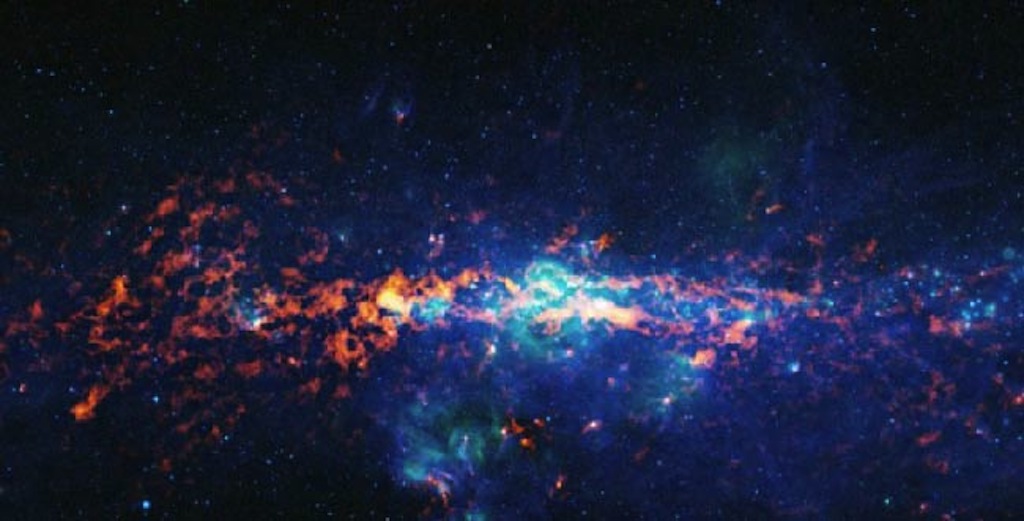Stunning Photos of Our Milky Way Galaxy (Gallery)
Milky Way’s Central Structure Seen with Fresh Clarity
An artist's rendering of the Milky Way and its central bar structure, with the Sun's position noted.
Rebel Stars Cross Paths with Sun
A simulated view of the Milky Way. Spiral arms contain higher concentrations of stars and gas. Each arm is a density wave that can reroute stars. The Sun is near the edge of one arm, about halfway out from the galactic center, or 26,000 light-years.
Exiled Stars: Milky Way Boots Members
A photos of one of the newfound stellar exiles.
Milky Way's Formation Theory Questioned
Part of one of the four regions of the sky in the direction of the galactic bulge in which the astronomers measured the iron and oxygen content of stars.
Ancient Outburst of Milky Way's Black Hole Discovered
This Chandra image shows our Galaxy’s center. The location of the black hole, known as Sagittarius A*, or Sgr A* for short, is arrowed. Also marked on this image are newly discovered large lobes of multimillion-degree gas that extend for dozens of light years on either side of the black hole.
Bursts Spotted at Milky Way's Black Hole
This is a color composite image of the central region of our Milky Way galaxy, about 26,000 light years from Earth. Giant clouds of gas and dust are shown in blue, as detected by the LABOCA instrument on the Atacama Pathfinder Experiment (APEX) telescope at submillimetre wavelengths (870 micron). The image also contains near-infrared data from the 2MASS project at K-band (in red), H-band (in green), and J-band (in blue). The image shows a region approximately 100 light-years wide.
New Photos of Milky Way From New Space Telescope
This composite image of star-forming gas clouds in the Milky Way was taken by the recently launched Hershel telescope, and released Oct. 2, 2009.
Breaking space news, the latest updates on rocket launches, skywatching events and more!
New Observations Detail Milky Way's Big Black Hole
This infrared image shows the center of our galaxy and the stars orbiting what is thought to be a supermassive black hole at the galactic center.
New Views of Our Milky Way Revealed
This image, showing the center of the Milky Way, from the constellation Sagittarius to the constellation Scorpius, was taken by amateur astronomer and astrophotographer Stephane Guisard.
Where Tomorrow's Stars Will Be Born
The center of the Milky Way harbors a supermassive black hole more than four million times the mass of our sun, about 25,000 light-years from Earth. Sagittarius B2 (Sgr B2) is one of the largest clouds of molecular gas in the Milky Way, shown here as the bright orange-red region at left and center (submillimeter-wavelength ATLASGAL data). This composite image includes infrared data (green and blue) from the Midcourse Space Experiment.

Space.com is the premier source of space exploration, innovation and astronomy news, chronicling (and celebrating) humanity's ongoing expansion across the final frontier. Originally founded in 1999, Space.com is, and always has been, the passion of writers and editors who are space fans and also trained journalists. Our current news team consists of Editor-in-Chief Tariq Malik; Editor Hanneke Weitering, Senior Space Writer Mike Wall; Senior Writer Meghan Bartels; Senior Writer Chelsea Gohd, Senior Writer Tereza Pultarova and Staff Writer Alexander Cox, focusing on e-commerce. Senior Producer Steve Spaleta oversees our space videos, with Diana Whitcroft as our Social Media Editor.
